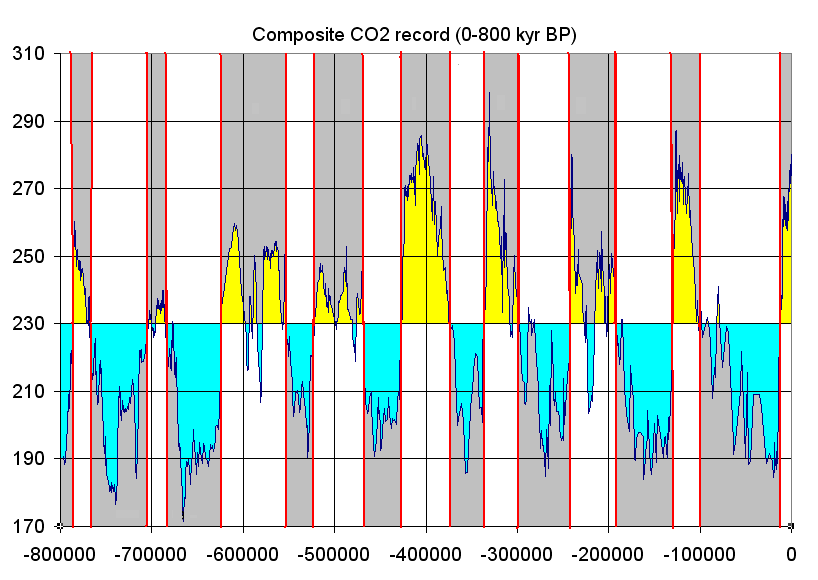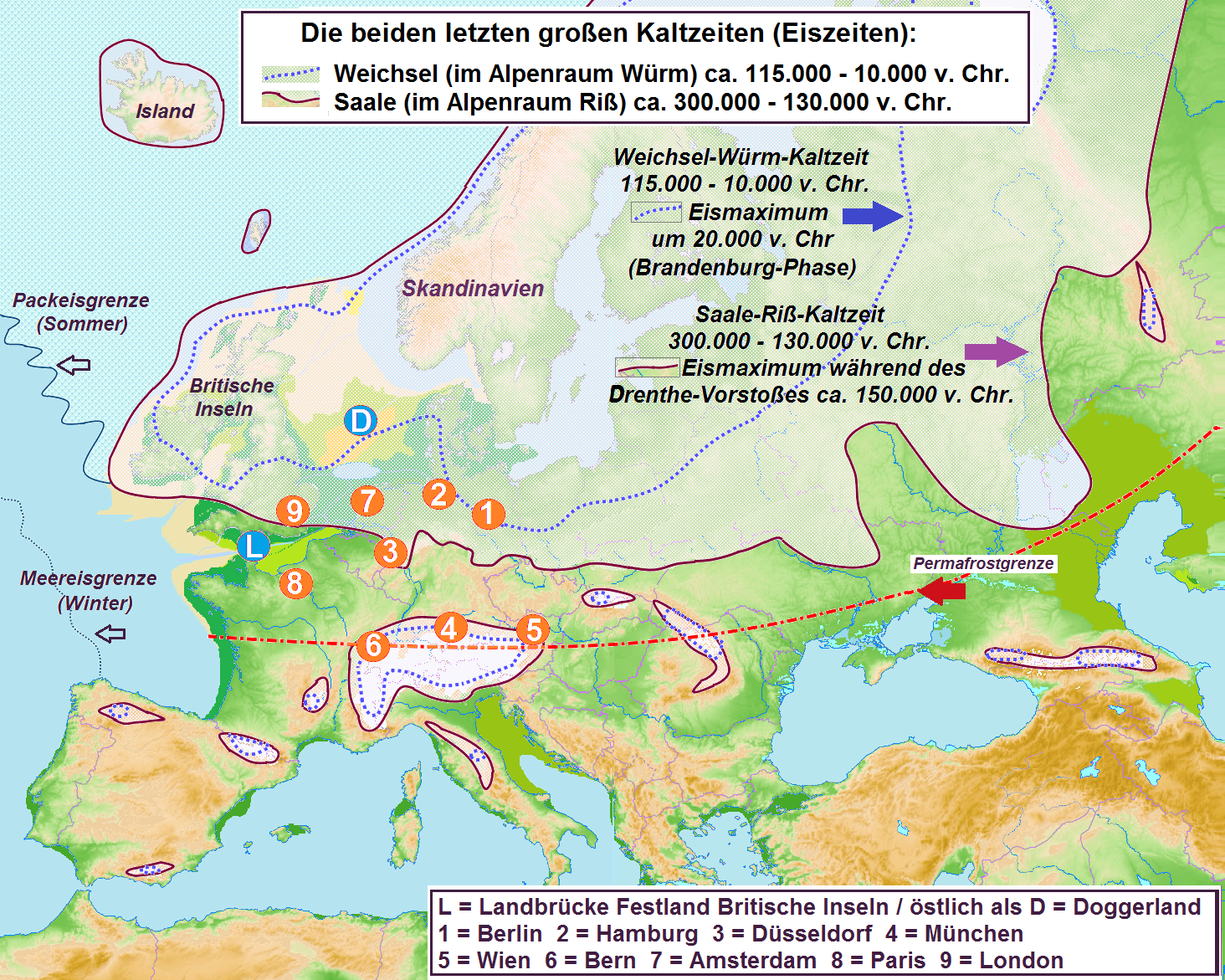|
Anglian Stage
The Anglian Stage is the name used in the British Isles for a middle Pleistocene glaciation. It precedes the Hoxnian Stage and follows the Cromerian Stage in the British Isles. The Anglian Stage is correlated to Marine Isotope Stage 12 (MIS 12), which started about 478,000 years ago and ended about 424,000 years ago. Lisiecki, L.E. (2005Ages of MIS boundaries. Boston MA:Boston University Description The Anglian stage has often been correlated to the of northern Continental Europe and the Mindel Stage in the |
United Kingdom
The United Kingdom of Great Britain and Northern Ireland, commonly known as the United Kingdom (UK) or Britain, is a country in Europe, off the north-western coast of the European mainland, continental mainland. It comprises England, Scotland, Wales and Northern Ireland. The United Kingdom includes the island of Great Britain, the north-eastern part of the island of Ireland, and many List of islands of the United Kingdom, smaller islands within the British Isles. Northern Ireland shares Republic of Ireland–United Kingdom border, a land border with the Republic of Ireland; otherwise, the United Kingdom is surrounded by the Atlantic Ocean, the North Sea, the English Channel, the Celtic Sea and the Irish Sea. The total area of the United Kingdom is , with an estimated 2020 population of more than 67 million people. The United Kingdom has evolved from a series of annexations, unions and separations of constituent countries over several hundred years. The Treaty of Union between ... [...More Info...] [...Related Items...] OR: [Wikipedia] [Google] [Baidu] |
Glacial Period
A glacial period (alternatively glacial or glaciation) is an interval of time (thousands of years) within an ice age that is marked by colder temperatures and glacier advances. Interglacials, on the other hand, are periods of warmer climate between glacial periods. The Last Glacial Period ended about 15,000 years ago. The Holocene is the current interglacial. A time with no glaciers on Earth is considered a greenhouse climate state. Quaternary Period Within the Quaternary, which started about 2.6 million years before present, there have been a number of glacials and interglacials. At least eight glacial cycles have occurred in the last 740,000 years alone. Penultimate Glacial Period The Penultimate Glacial Period (PGP) is the glacial period that occurred before the Last Glacial Period. It began about 194,000 years ago and ended 135,000 years ago, with the beginning of the Eemian interglacial. Last Glacial Period The last glacial period was the most recent glacial perio ... [...More Info...] [...Related Items...] OR: [Wikipedia] [Google] [Baidu] |
Wolstonian Stage
The Wolstonian Stage is a middle Pleistocene stage of the geological history of Earth from approximately 374,000 until 130,000 years ago. It precedes the Eemian Stage in Europe and follows the Hoxnian Stage in the British Isles. It is also approximately analogous to the Warthe and Saalian stages in northern Europe; the Riss glaciation in the Alps; and the Illinoian Stage in North America. It is equivalent to Marine isotope stages (MIS) 10 through 6. MIS 10, 8 and 6 were glacial periods and 9 and 7 were interglacials. It is named after Wolston in the English county of Warwickshire. Description The Wolstonian Stage is a middle Pleistocene stage of the geological history of Earth that precedes the Ipswichian Stage ( Eemian Stage in Europe) and follows the Hoxnian Stage in the British Isles. The Wolstonian Stage apparently includes three periods of glaciation. The Wolstonian Stage is temporally analogous to the Warthe Stage and Saalian Stage in northern Europe and th ... [...More Info...] [...Related Items...] OR: [Wikipedia] [Google] [Baidu] |
Anglian Stage
The Anglian Stage is the name used in the British Isles for a middle Pleistocene glaciation. It precedes the Hoxnian Stage and follows the Cromerian Stage in the British Isles. The Anglian Stage is correlated to Marine Isotope Stage 12 (MIS 12), which started about 478,000 years ago and ended about 424,000 years ago. Lisiecki, L.E. (2005Ages of MIS boundaries. Boston MA:Boston University Description The Anglian stage has often been correlated to the of northern Continental Europe and the Mindel Stage in the |
Beestonian Stage
The Beestonian Stage is an early Pleistocene stage used in the British Isles. It is named after Beeston Cliffs near West Runton in Norfolk where deposits from this stage are preserved. The Beestonian precedes the Cromerian Stage and follows the Pastonian Stage. This stage consists of alternating glacial and interglacial phases instead of being a continuous glacial epoch. It is equivalent to Marine isotope stages 22 to (60?).Walker, M., 2005, ''Quaternary Dating Methods'', John Wiley & Son, Chichester, United Kingdom. Gibbard, P.L., S. Boreham, K.M. Cohen and A. Moscariello, 2007''Global chronostratigraphical correlation table for the last 2.7 million years v. 2007b'', jpg version 844 KB. Subcommission on Quaternary Stratigraphy, Department of Geography, University of Cambridge, Cambridge, England The Beestonian Stage and Marine Isotope Stage 22 ended about 866,000 years ago.Lisiecki, L.E., 2005Ages of MIS boundaries. [...More Info...] [...Related Items...] OR: [Wikipedia] [Google] [Baidu] |
Weichselian
The Weichselian glaciation was the last glacial period and its associated glaciation in northern parts of Europe. In the Alpine region it corresponds to the Würm glaciation. It was characterized by a large ice sheet (the Fenno-Scandian ice sheet) that spread out from the Scandinavian Mountains and extended as far as the east coast of Schleswig-Holstein, northern Poland and Northwest Russia. This glaciation is also known as the Weichselian ice age (german: Weichsel-Eiszeit), Vistulian glaciation, Weichsel or, less commonly, the Weichsel glaciation, Weichselian cold period (''Weichsel-Kaltzeit''), Weichselian glacial (''Weichsel-Glazial''), ''Weichselian Stage'' or, rarely, the Weichselian complex (''Weichsel-Komplex''). In Northern Europe it was the youngest of the glacials of the Pleistocene ice age. The preceding warm period in this region was the Eemian interglacial. The last cold period began about 115,000 years ago and ended 11,700 years ago. Its end corresponds with ... [...More Info...] [...Related Items...] OR: [Wikipedia] [Google] [Baidu] |
Saalian
The Saale glaciation or Saale Glaciation, sometimes referred to as the Saalian glaciation, Saale cold period (german: Saale-Kaltzeit), Saale complex (''Saale-Komplex'') or Saale glacial stage (''Saale-Glazial'', colloquially also the ''Saale-Eiszeit'' or ''Saale-Zeit''), covers the middle of the three large glaciations in Northern Europe and the northern parts of Eastern, Central and Western Europe by the Scandinavian Inland Ice Sheet between the older Elster glaciation and the younger Weichselian glaciation, also called the Last Glacial Period. Age and definitions It succeeded the Holstein interglacial and was followed by the Eemian interglacial. The Saale complex is currently estimated, depending on the source, as existing from around 300,000 to 130,000 years ago or 347,000 to 128,000 years ago (duration: around 219,000 years), roughly contemporaneous with the glaciation of the Riss Glacial in the Alpine region. The actual "ice age" includes only part of the Saale glaciation ... [...More Info...] [...Related Items...] OR: [Wikipedia] [Google] [Baidu] |
Elsterian
The Elster glaciation (german: Elster-Kaltzeit, ''Elster-Glazial'' or ''Elster-Zeit'') or, less commonly, the Elsterian glaciation, in the older and popular scientific literature also called the Elster Ice Age (''Elster-Eiszeit''), is the oldest known ice age that resulted in the large-scale glaciation of North Germany. It took place 500,000–300,000 years ago. It succeeded a long period of rather warmer average temperatures, the Cromerian Complex. The Elster was followed by the Holstein interglacial and the Saale glaciation. The glacial period is named after the White Elster, a right tributary of the Saale. Controversial correlations Traditionally, Elster was correlated with the Mindel glaciation of the Alps and the Anglian glaciation of Great Britain and Ireland. Analysis in the 1950s of oxygen isotopes in deep sea core samples introduced a global glacial history, with warm and cold phases identified by marine isotope stages (MIS). This identified two glacial stages in the t ... [...More Info...] [...Related Items...] OR: [Wikipedia] [Google] [Baidu] |
Eburonian
The Eburonian (german: Eburon or ''Eburonium''), or, much less commonly, the Eburonian Stage, is a glacial complex in the Calabrian age of the Pleistocene epoch and lies between the Tegelen and the Waalian interglacial. The transition from the Tegelen to the Eburonian started about 1.78 million years ago, lasted 480,000 years (to 1.3 million years ago). In geologic strata, at its base, from its startpoint, the Neogene underlies different Gelasian deposits starkly in much of the Netherlands.Hey, R. W. ''The Plio-Pleistocene of England and Iceland'' in Van Couvering, John A. (editor), (1997) ''The Pleistocene Boundary and the Beginning of the Quaternary'', Cambridge, Cambridge University Press, p. 183. . Discovery As early as the 1920s, the names of the three well known glaciations - the Elster, the Saale and the Weichselian - had become established at the recommendation of Konrad Keilhack and Paul Woldstedt. After Penck & Brückner successfully identified a fourth glaciation i ... [...More Info...] [...Related Items...] OR: [Wikipedia] [Google] [Baidu] |
Würm Glaciation
The Würm glaciation or Würm stage (german: Würm-Kaltzeit or ''Würm-Glazial'', colloquially often also ''Würmeiszeit'' or ''Würmzeit''; cf. ice age), usually referred to in the literature as the Würm (often spelled "Wurm"), was the last glacial period in the Alpine region. It is the youngest of the major glaciations of the region that extended beyond the Alps themselves. Like most of the other ice ages of the Pleistocene epoch, it is named after a river, in this case the Würm in Bavaria, a tributary of the Amper. The Würm ice age can be dated to about 115,000 to 11,700 years ago, but sources differ about the dates, depending on whether the long transition phases between the glacials and interglacials (warmer periods) are allocated to one or other of those periods. The average annual temperatures during the Würm ice age in the Alpine Foreland were below −3 °C (today +7 °C). That has been determined from changes in the vegetation ( pollen analysis), as well ... [...More Info...] [...Related Items...] OR: [Wikipedia] [Google] [Baidu] |
Riss Glaciation
The Riss glaciation, Riss Glaciation, Riss ice age, Riss Ice Age, Riss glacial or Riss Glacial (german: Riß-Kaltzeit, ', ' or (obsolete) ') is the second youngest glaciation of the Pleistocene epoch in the traditional, quadripartite glacial classification of the Alps. The literature variously dates it to between about 300,000 to 130,000 years ago and 347,000 to 128,000 years ago. It coincides with the glaciation of North Germany. The name goes back to and who named this cold period after the river in Upper Swabia in their three-volume work ' ("The Alps in the Ice Age") published between 1901 and 1909. Boundaries and division The Riss glaciation was defined by Penck and Brückner as the Lower (''Niedere'') or Younger Old Moraines and Old Terminal Moraines High Terraces (''Jüngere Altmoränen und Alt-Endmoränen-Hochterrassen''). The type locality lies near Biberach an der Riß where the end of the northeastern Rhine Glacier stood. Results gained from over a century of resea ... [...More Info...] [...Related Items...] OR: [Wikipedia] [Google] [Baidu] |
Mindel Glaciation
The Mindel glaciation (german: Mindel-Kaltzeit, also ''Mindel-Glazial'', ''Mindel-Komplex'' or, colloquially, ''Mindel-Eiszeit'') is the third youngest glacial stage in the Alps. Its name was coined by Albrecht Penck and Eduard Brückner, who named it after the Swabian river, the Mindel. The Mindel glacial occurred in the Middle Pleistocene; it was preceded by the Haslach-Mindel interglacial (often regarded as part of Günz) and succeeded by the Mindel-Riss interglacial ( Holstein interglacial). The Mindel glaciation is commonly correlated to the Elster glaciation of northern Europe. The more precise timing is controversial since Mindel is commonly correlated to two different marine isotope stages, MIS 12 (478–424 thousand years ago) and MIS 10 (374–337 thousand years ago). This ambiguity is much related to the correlation problem described in more detail in the article ' Elster glaciation'. See also * Timeline of glaciation *Glaciology Glaciology (; ) is the sci ... [...More Info...] [...Related Items...] OR: [Wikipedia] [Google] [Baidu] |




